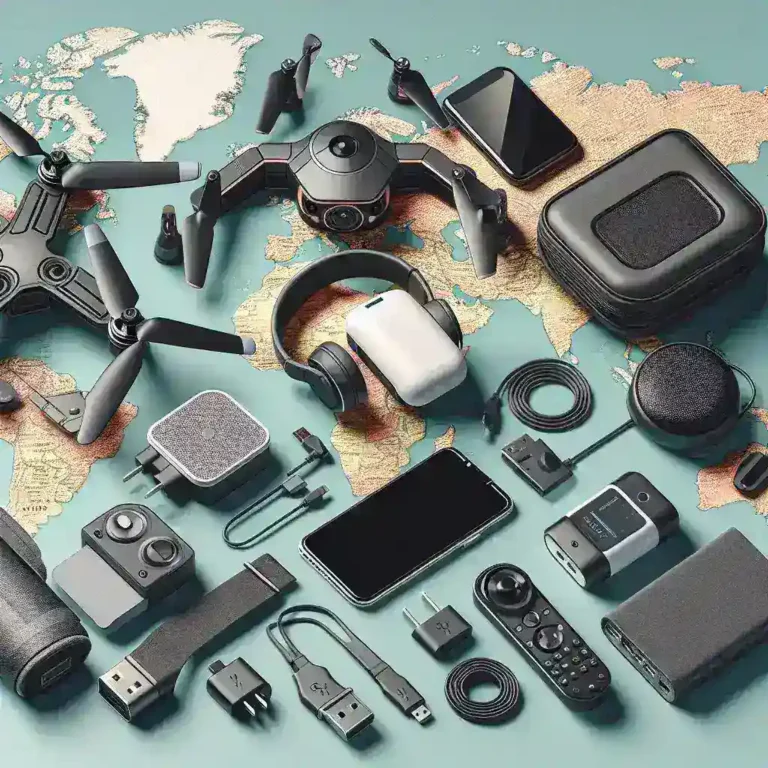
The Complete Guide to YouTube Video Downloads: Methods, Tools, and Best Practices
Understanding the Landscape of Video Content Preservation
The digital age has transformed how we consume and interact with multimedia content. Video platforms have become central repositories of knowledge, entertainment, and cultural expression. As users increasingly seek ways to access their favorite content offline, understanding the mechanisms behind video preservation has become essential for modern digital literacy.
The ability to save videos locally serves multiple purposes beyond mere convenience. Educational institutions rely on offline access for remote learning environments, content creators need backup copies of their work, and researchers require archived materials for academic purposes. This comprehensive exploration examines the various approaches to Youtube video download while addressing the technical, legal, and practical considerations involved.
Technical Architecture Behind Video Streaming Platforms
Modern video platforms employ sophisticated content delivery networks that dynamically adjust video quality based on user bandwidth and device capabilities. These systems utilize adaptive streaming protocols that segment videos into multiple quality levels, enabling seamless playback across diverse network conditions.
The underlying infrastructure involves complex encoding algorithms that compress video files while maintaining visual fidelity. Understanding these technical foundations provides insight into why different download methods yield varying results in terms of quality and file size. Platform architects implement these systems with specific viewing experiences in mind, often prioritizing streaming efficiency over download accessibility.
Codec Technologies and Quality Considerations
Video compression relies on advanced codec technologies that balance file size with visual quality. Modern platforms primarily utilize H.264 and H.265 encoding standards, each offering distinct advantages for different use cases. H.264 provides excellent compatibility across devices, while H.265 delivers superior compression ratios for newer hardware.
Resolution options typically range from 144p for minimal bandwidth scenarios to 4K for premium viewing experiences. Higher resolutions require exponentially larger file sizes, making storage considerations crucial for users planning extensive offline libraries. Audio quality accompanies video streams with options spanning from basic 128kbps to high-fidelity 320kbps encoding.
Legal Framework and Copyright Considerations
The legal landscape surrounding video downloads involves complex copyright regulations that vary significantly across jurisdictions. Content creators retain intellectual property rights over their material, while platform terms of service typically restrict unauthorized downloading activities.
Fair use provisions in many countries permit downloading for personal, educational, or research purposes under specific circumstances. However, redistributing downloaded content without permission consistently violates copyright laws regardless of jurisdiction. Users must navigate these legal complexities while respecting creator rights and platform policies.
Platform Policies and User Agreements
Major video platforms implement comprehensive terms of service that explicitly address downloading activities. These agreements typically prohibit unauthorized access to video streams through third-party tools or software modifications. Violating these terms can result in account suspension or permanent bans from platform services.
Educational institutions often negotiate special licensing agreements that permit controlled downloading for academic purposes. These arrangements demonstrate how legal frameworks can accommodate legitimate use cases while protecting creator interests and platform revenue models.
Browser-Based Download Solutions
Web browsers offer various built-in and extension-based solutions for video preservation. Browser extensions provide user-friendly interfaces that integrate directly with video pages, offering convenient download options without requiring separate software installations.
Popular browser extensions analyze page source code to identify video stream URLs, presenting users with quality options and format choices. These tools typically support multiple video platforms and provide batch downloading capabilities for playlist content.
Extension Security and Privacy Considerations
Browser extensions require careful evaluation regarding security and privacy implications. Reputable extensions undergo regular security audits and maintain transparent privacy policies. Users should verify extension permissions and review developer credentials before installation.
Some extensions may collect browsing data or inject advertisements into downloaded content. Reading user reviews and checking extension update frequencies helps identify trustworthy options that prioritize user security over monetization schemes.
Desktop Application Alternatives
Dedicated desktop applications offer enhanced functionality compared to browser-based solutions. These programs typically provide advanced features such as playlist downloading, automatic quality selection, and integrated media conversion capabilities.
Desktop applications often support broader format options and provide more reliable downloading for large files or extensive playlists. Many applications include built-in media players and organization tools that facilitate offline content management.
Cross-Platform Compatibility
Modern desktop applications prioritize cross-platform compatibility, ensuring consistent functionality across Windows, macOS, and Linux operating systems. This approach enables users to maintain familiar workflows regardless of their preferred computing environment.
Command-line interfaces appeal to technically proficient users who prefer scriptable solutions for automated downloading tasks. These tools often provide the most comprehensive feature sets and customization options for power users.
Mobile Device Considerations
Mobile devices present unique challenges and opportunities for video downloading. Smartphone storage limitations require careful consideration of file sizes and quality settings. Many users prefer lower-resolution downloads that balance visual quality with storage efficiency.
Mobile applications designed for video downloading must navigate platform-specific restrictions imposed by app stores. iOS and Android maintain different policies regarding download applications, affecting available options for mobile users.
Offline Viewing Optimization
Mobile viewing patterns differ significantly from desktop consumption habits. Users typically prefer shorter video segments optimized for mobile screens and limited attention spans. Understanding these preferences helps optimize download strategies for mobile-first content consumption.
Battery life considerations also influence mobile downloading decisions. Pre-downloading content over Wi-Fi connections preserves battery life during actual viewing sessions while reducing cellular data consumption.
Quality Selection and File Management
Choosing appropriate video quality requires balancing visual fidelity with storage constraints and intended use cases. Educational content may prioritize audio clarity over visual quality, while entertainment content typically benefits from higher resolution options.
File naming conventions and organizational strategies become crucial for users maintaining extensive offline libraries. Consistent naming patterns facilitate content discovery and prevent duplicate downloads of identical material.
Storage Solutions and Media Management
Local storage solutions range from internal device memory to external drives and cloud storage services. Each option presents distinct advantages regarding accessibility, security, and cost considerations. External drives provide expandable storage but require physical connection, while cloud services offer universal access with ongoing subscription costs.
Media management software helps organize downloaded content through metadata tagging, thumbnail generation, and search functionality. These tools transform chaotic file collections into structured libraries that enhance content discovery and viewing experiences.
Network Optimization and Download Strategies
Network conditions significantly impact download success rates and completion times. Users on limited bandwidth connections benefit from scheduling downloads during off-peak hours when network congestion decreases.
Download managers provide advanced features such as pause/resume functionality, bandwidth throttling, and automatic retry mechanisms. These tools prove invaluable for users with unreliable internet connections or strict data usage limitations.
Bandwidth Management Techniques
Effective bandwidth management involves understanding network usage patterns and implementing appropriate throttling strategies. Users sharing network connections should consider impact on other users when initiating large downloads.
Parallel downloading capabilities enable faster completion times for multiple small files while potentially overwhelming network resources for single large downloads. Understanding these trade-offs helps optimize download strategies for specific network environments.
Security Implications and Best Practices
Video downloading activities can expose users to various security risks, particularly when utilizing third-party tools or websites. Malicious software often disguises itself as legitimate download utilities, making careful source verification essential.
Reputable security organizations like US-CERT provide guidelines for safe software installation and usage practices. Following these recommendations helps minimize exposure to malware and other security threats.
Antivirus software should remain active during download activities, with real-time scanning enabled for all downloaded files. Regular security updates ensure protection against emerging threats that target video downloading activities.
Privacy Protection Measures
Privacy-conscious users should consider VPN services when accessing download tools or websites. These services encrypt internet traffic and mask user locations, providing additional anonymity for download activities.
Clearing browser caches and download histories regularly prevents unauthorized access to download records. Privacy-focused browsers offer enhanced tracking protection that complements secure downloading practices.
Alternative Content Access Methods
Many content creators offer official download options through platform features or direct distribution channels. These legitimate alternatives often provide superior quality and ensure creator compensation while avoiding legal complications.
Subscription services frequently include offline viewing features that eliminate the need for third-party downloading tools. These built-in solutions typically offer the best user experience while respecting content licensing agreements.
Creator-Approved Distribution Channels
Independent content creators increasingly utilize direct distribution platforms that encourage downloading and sharing. These services align creator interests with user preferences while maintaining sustainable revenue models.
Educational institutions often partner with content creators to develop specialized distribution agreements that facilitate academic use of video materials. These arrangements demonstrate how collaborative approaches can satisfy multiple stakeholder interests.
Future Trends and Technological Developments
Emerging technologies continue reshaping video distribution and consumption patterns. Blockchain-based content distribution systems promise enhanced creator control while enabling new monetization models that could influence downloading practices.
Artificial intelligence integration offers potential improvements in content recommendation and automatic quality optimization based on user preferences and device capabilities. These developments may reduce the need for manual download management while enhancing user experiences.
Industry Standards Evolution
Video compression standards continue evolving with new codec developments that promise better quality at smaller file sizes. These improvements will impact downloading decisions as users balance quality expectations with storage limitations.
According to research from International Telecommunication Union, next-generation video standards will prioritize mobile optimization and bandwidth efficiency, potentially transforming download requirements for mobile users.
Troubleshooting Common Download Issues
Download failures often result from network timeouts, server overload, or software compatibility issues. Understanding common failure modes helps users implement effective troubleshooting strategies that minimize frustration and wasted time.
Incomplete downloads typically indicate network interruptions or insufficient storage space. Verifying available storage before initiating downloads prevents partial completion issues that require restart procedures.
Performance Optimization Techniques
Download performance depends on multiple factors including network speed, server capacity, and local system resources. Closing unnecessary applications during download sessions can improve completion rates and reduce system strain.
Regular software updates ensure compatibility with evolving platform technologies and security requirements. Outdated download tools may fail to access current video streams or encounter compatibility issues with modern browsers.
Educational and Research Applications
Academic institutions rely heavily on video content for distance learning and research purposes. Offline access enables continued education in areas with limited internet connectivity while reducing bandwidth costs for educational organizations.
Research applications often require long-term content preservation for longitudinal studies or historical analysis. Downloaded videos serve as permanent records that remain accessible regardless of platform policy changes or content removal decisions.
Institutional Licensing Considerations
Educational licensing agreements typically include provisions for limited downloading and redistribution within academic contexts. These arrangements balance creator rights with educational needs while establishing clear usage boundaries.
Libraries and archives increasingly focus on digital preservation strategies that include video content. Professional archival standards ensure long-term accessibility while maintaining content integrity across technological transitions.
Content Creator Perspectives
Content creators maintain diverse perspectives regarding download activities, with some encouraging sharing while others prefer platform-controlled distribution. Understanding creator preferences helps users make informed decisions about download activities.
Many creators appreciate download activities that expand their audience reach, particularly for educational or advocacy content. These creators often provide official download options or explicitly permit third-party downloading through creative commons licensing.
Revenue Impact Considerations
Platform-based revenue models typically depend on advertising impressions and engagement metrics that downloading activities may circumvent. Creators relying on these revenue streams may prefer streaming consumption over download alternatives.
Direct support mechanisms such as merchandise sales, crowdfunding, or subscription services provide creators with download-independent revenue sources. These models often encourage content sharing and downloading as audience engagement strategies.
Global Accessibility and Digital Equity
Internet accessibility varies dramatically across global regions, making offline content access crucial for digital equity initiatives. Downloaded videos enable educational and informational content consumption in areas with limited or expensive internet connectivity.
Developing regions often rely on mobile devices as primary computing platforms, emphasizing the importance of mobile-optimized download solutions. These considerations influence global platform strategies and tool development priorities.
Cultural and Language Considerations
Multilingual content preservation requires attention to subtitle and audio track availability in downloaded formats. Users in non-English speaking regions particularly benefit from comprehensive language support in download tools.
Cultural content preservation efforts often involve downloading videos that document traditional practices, languages, or historical events. These activities serve important cultural heritage functions beyond individual entertainment purposes.
Environmental Impact and Sustainability
Digital content consumption carries environmental implications through energy usage for streaming, storage, and processing activities. Downloaded content can reduce repeated streaming energy costs while shifting environmental impact to local storage requirements.
Sustainable download practices involve balancing offline access benefits with storage efficiency and energy consumption considerations. Users can optimize environmental impact through careful quality selection and storage management strategies.
Energy Efficiency Considerations
Local storage typically requires less ongoing energy consumption compared to repeated streaming activities. However, download processes themselves consume significant energy during transfer and processing phases.
Green technology initiatives in data centers and content delivery networks continue improving the environmental efficiency of digital content distribution. These developments influence the relative environmental impact of streaming versus downloading approaches.



Leave a Comment